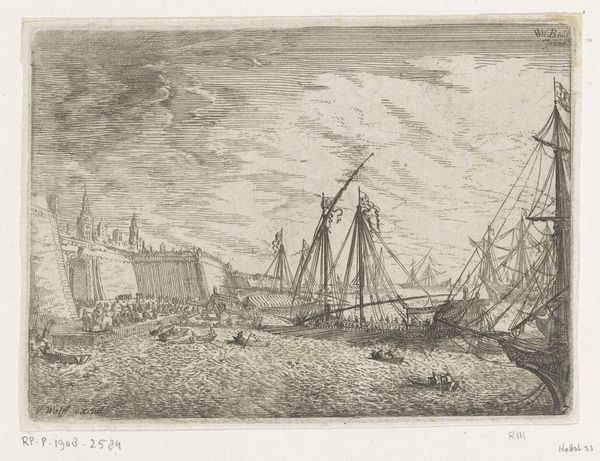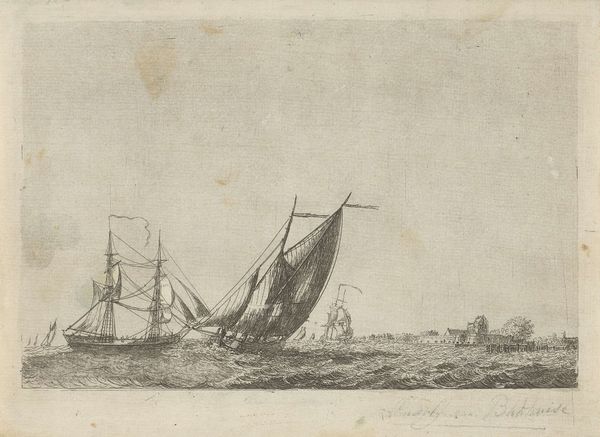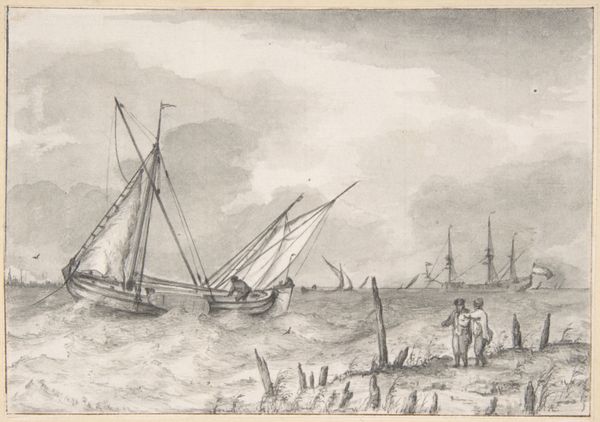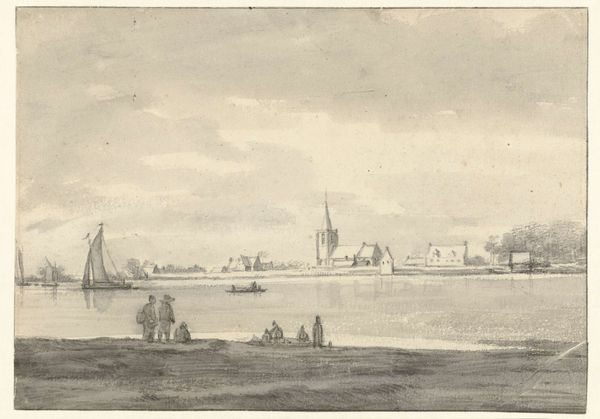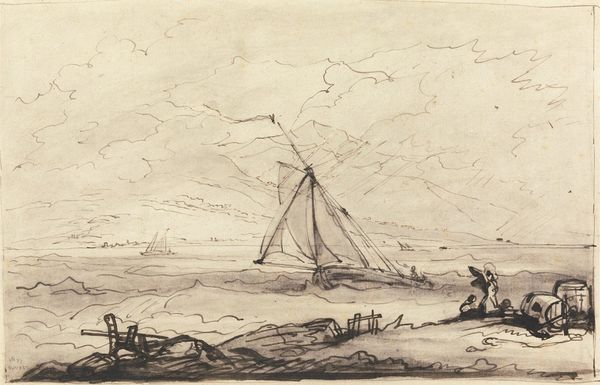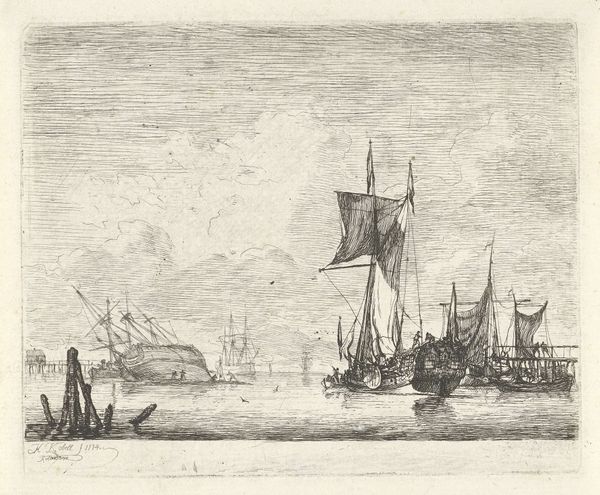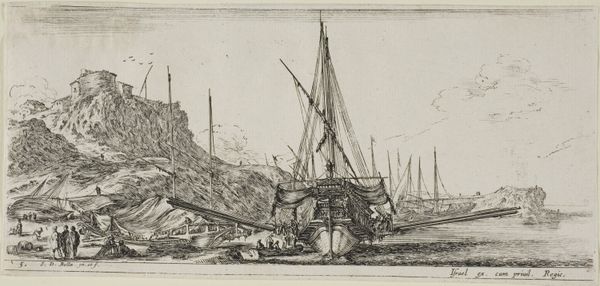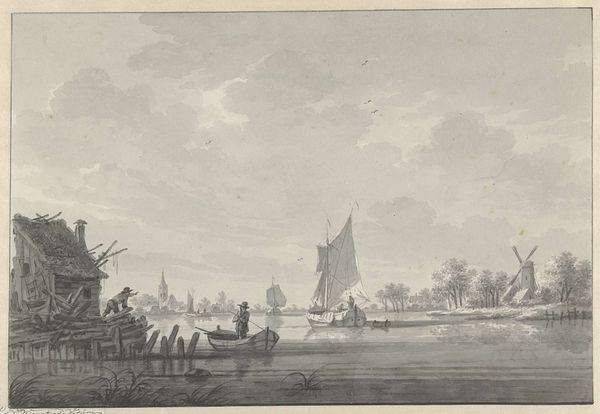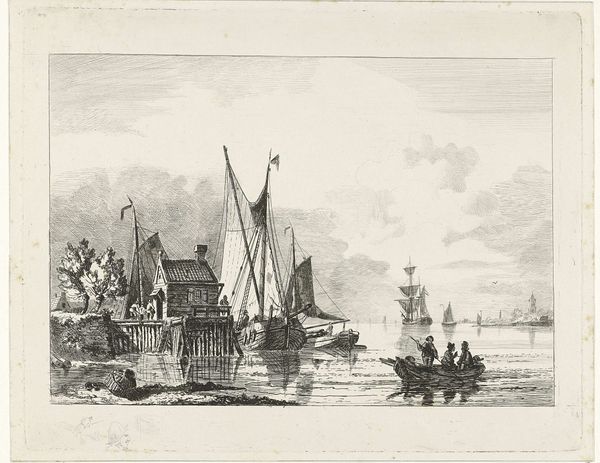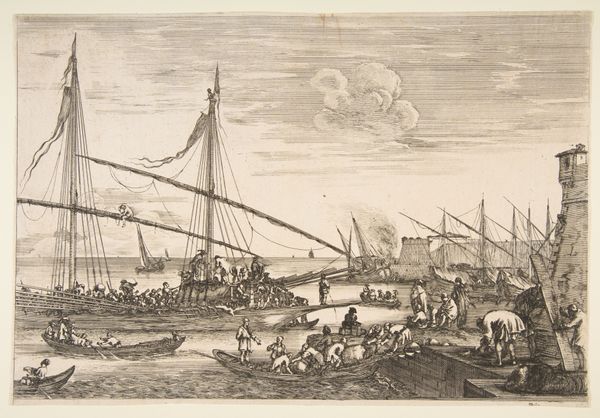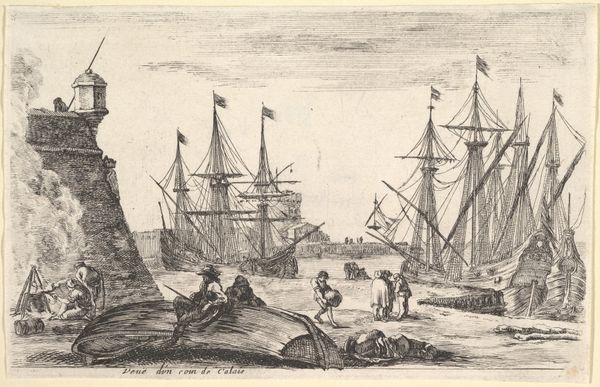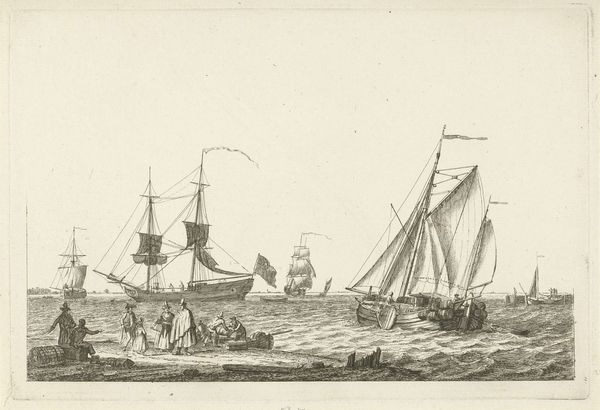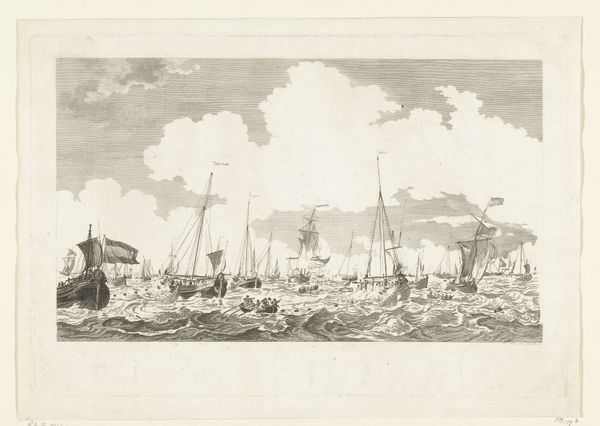
A naval battle, a rowboat full of men to left, a sinking ship to right, two galleys battling in center, other ships battle to left in the background, from 'Various landscapes' (Divers paysages) 1636 - 1646
0:00
0:00
aquatint, drawing, print, etching
#
aquatint
#
drawing
#
baroque
#
ship
# print
#
etching
#
landscape
#
men
#
history-painting
Dimensions: Sheet: 3 1/8 x 7 1/2 in. (8 x 19 cm)
Copyright: Public Domain
Curator: Before us is "A naval battle, a rowboat full of men to left, a sinking ship to right, two galleys battling in center, other ships battle to left in the background, from 'Various landscapes'," an etching and aquatint created by Stefano della Bella sometime between 1636 and 1646. Editor: The detail is incredible. It evokes a sense of chaos and desperation, even at this remove. The composition, with the sinking ship pulling the eye to the right, feels unbalanced, mirroring the instability of warfare. Curator: Right, Bella’s skill with etching is particularly notable here. Notice how he uses varying line weights and densities to suggest depth and texture. The aquatint adds a tonal richness unusual for prints of this period. Editor: This battle scene brings up so many questions about power, not only naval dominance, but also social hierarchies within the ship, class dynamics of military conflict, and perhaps even the commodification of war. Who were the people involved in the represented war and whose interests were served? Curator: Examining the production and circulation of such prints, one can think of how Bellas' prints catered to a burgeoning market for picturesque landscapes and battle scenes during the Baroque era. The economics of art intersects with political agendas here. Editor: I agree, Stefano della Bella positions the power structures of the war with all the elements he uses for his creation: galleys as centers of war, sinking ship showing destruction, rowboat signaling the displacement that conflicts cause. This print certainly encourages us to think about war beyond simple narratives of victory and defeat. It encourages us to ponder on who benefits and who bears the consequences in the great scheme of things. Curator: It speaks to his masterful technique and commercial awareness, but let's also consider how these prints functioned as a form of documentation and propaganda, shaping public perception of naval power during a time of European maritime expansion. Editor: Exactly! These aren't passive images; they’re tools for shaping public opinion, intertwining art with geopolitical strategies. And I'm thinking also of the environmental costs linked with constant wars like this: the deforestation, resource consumption, and pollution...it's not just a piece of "history." Curator: Looking at it this way, it opens dialogues about materiality and the heavy environmental impact of naval power projection, even centuries ago, adding new depth to this historical work. Editor: Indeed, analyzing art is all about peeling back layers to find meaning through the materials and context in order to foster critical conversations about the past and present.
Comments
No comments
Be the first to comment and join the conversation on the ultimate creative platform.
